Parsival
Interview with Jeanne D'Aout: New book with Otto is out
Q: It’s nice to meet you again. Congratulations on your new book!
The new book, The Eye of Ra, also features Otto Rahn. I know every new book is always a breakthrough for a real writer. What was your main finding?
A: My most important discovery while writing my second book, ‘The Eye of Ra’, is the incredible experience of having lots of questions and finding out as soon as I started writing, that I had the answers already within me. Writing activates something in the brain that helps you understand certain things that are normally difficult to understand. Writing ‘The Eye of Ra’ took me back to ancient Egypt, where I set myself the quest of discovering the identity of the Biblical divination stones known as the Urim and Thummim, and to understand the psyche behind the heretical Pharaoh Akhenaten.
Otto Rahn's Crusade Against the Grail
William Henry talks to Christopher Jones, who has translated one of the legendary ?hidden? books of our time, Otto Rahn's Crusade Against the Grail. Although Rahn wrote in 1933, it has taken 73 years for it to be published in English. Find out why, then listen to possible Sasquatch cries thanks to the intrepid Linda Moulton Howe!
Otto Rahn y la Búsqueda Nazi por el Secreto de los Cátaros
La Berlin de entreguerras era una ciudad conocida en toda Europa por su sub-cultura bohemia y sus jovenes intelectuales. Entre los personajes que ardientemente celebraban los abundantes «ismos» que estaban fracturando las viejas certezas ideologicas, las cuales habian compactado el siglo XIX, pocos individuos eran mas coloridos que un joven de ojos verdes y cabellos oscuros llamado Otto Rahn. Su figura delgada, envuelta en un caracteristico abrigo negro y sombrero tiroles, arrojaba una larga sombra desde esos anos sombrios, una «gran silueta» alrededor de la cual se han acumulado los mitos mas extravagantes. El fue considerado igualmente como mason, rosacruz, luciferino, y un agente de la Sociedad Thule. Como lo plantea el autor Phillip Kerr, los contemporaneos de Rahn no se habrian sorprendido de ver «la Dama Escarlata y la Gran Bestia salir volando desde la puerta del frente» de su apartamento en Tiergartenstrasse. Uno de sus companeros de la Orden Negra de Heinrich Himmler comento en un memorandum interno que el «medio sospechaba que Rahn tenia relaciones con el pueblo pequeno».
Lachrymae, Chapter IV: The Final Chapter
An Online Journal by Richard Stanley<
(Originally appeared in R. S.' MySpace<, December 9th, 2007.)
Brethren, I have invited you here to this ancient, invisible theatre with the intention of not only unmasking the killer God responsible for these crimes against 'reality', but more cogently, to provide an unambiguous solution to two or perhaps three long running esoteric enigmas!
I salute those who have stayed with the program from the top. For late joiners I include an index to conjure order out of the scrolling chaos and serve as an aid memoir for those hardy few who dare read further. I have very little keyboard time at present and less in the months to come. Until we meet again this strange saga is my gift to you.
Be warned the completed text contains 'spoilers' and may be hazardous to your belief systems.
Otto Rahn: las conexiones entre catarismo y nazismo
UNA DE LAS FIGURAS que más fascinación ha ejercido en relación al mundo “neocátaro” es Otto Rahn, que buscó el Santo Grial en la fortaleza de Montségur. Miembro de las SS que acabó expulsado de sus filas, dejó una obra escrita breve pero influyente en el entorno hitleriano al amalgamar nazismo y catarismo. Sabemos muy poco de él, pues su trayectoria está rodeada de toda suerte de especulaciones. Y es que su personalidad fue harto chocante: francófilo y al parecer homosexual, se desenvolvió en un universo nazi pangermánico y exaltador de la virilidad.
Así las cosas, los interrogantes sobre Rahn son numerosos, abarcan todos los órdenes de su vida y tienen difícil respuesta con las fuentes disponibles: ¿Fue un estudioso del catarismo o lo empleó como pretexto para labores de espionaje? ¿Actuó como un nazi convencido o su condición de homosexual y la falta de medios le llevaron a las filas de las SS? ¿Murió en 1939 o se orquestó una farsa para “blanquear” sus supuestos ancestros judíos? Al margen de sus móviles, sabemos con certeza que nazificó el catarismo y mereció la atención y la complacencia del máximo dirigente de las SS, Heinrich Himmler.
Otto Rahn: author, poet, Grail seeker, SS officer
In February 2007, Montserrat Rico Góngora published “The Desecrated Abbey”, in which he claimed that Heinrich Himmler, Hitler’s second-in-command and head of the Nazi SS, had made a secret wartime mission to an abbey in Spain, in search of the Holy Grail. Góngora even interviewed Andreu Ripol Noble, a former monk and the only person that spoke German, who was ordered by his superiors to guide Himmler during the visit in 1940. Ripol related that Himmler came to Montserrat inspired by Richard Wagner’s opera “Parsifal”, which mentions that the Holy Grail could be kept in “the marvellous castle of Montsalvat in the Pyrenees” – the mountain range that marks the border between France and Spain.
Il neopaganesimo di Otto Rahn
Il caso di Otto Rahn è ormai noto: è la storia di un giovane romantico, che insegue un sogno. Un giorno entra in contatto con un potere sensibile al mito – il Terzo Reich -, che lo lancia e lo valorizza: ciò che presto lo porta a credersi una specie di nuovo cavaliere templare. Il mito del Graal, quello di una società di puri e di idealisti, di un regno dello spirito, popolava il suo immaginario. Certo del legame storico tra l’eresia dei Catari e la poesia dei trovatori medievali, l’una è l’altra viste come sopravvivenza pagana sotto la scorza del cristianesimo ufficiale, Rahn si convinse che il fulcro di questa cultura si fosse trovato un tempo nel castello provenzale di Montségur, alle pendici dei Pirenei. Proprio il luogo dove, nel 1244, avvenne il finale sterminio dei Catari da parte della Chiesa. In questa zona, intorno al 1929, Rahn svolse ricerce, percorse grotte e camminamenti, rintracciò graffiti e interpretò simboli arcani. Alla fine raccolse il tutto e scrisse il celebre libro Crociata contro il Graal, pubblicato nel 1933. L’incontro fatale con Himmler, anch’egli interessato alla storia delle eresie e all’universo dei simboli pre-cristiani, il pronto arruolamento e la rapida ascesa nelle SS, portarono però Rahn a inciampare nel suo piccolo-grande segreto. Sembra infatti che una mal vissuta omosessualità sia stata all’origine delle sue dimissioni dall’Ordine Nero nel 1938 e infine del suo suicidio, avvenuto per congelamento tra le montagne del Tirolo, nel marzo del 1939. Rahn rimase vittima di un trauma, per esser stato coinvolto in un piccolo scandalo omoerotico? Non resse il clima ideologico delle SS? Venne forse spinto a quel gesto? O ci arrivò da solo, per evitare l’isolamento sociale e magari la persecuzione?
Otto Rahn im Wikipedia
Otto Wilhelm Rahn (* 18. Februar 1904 in Michelstadt im Odenwald; † 13./14. März 1939 bei Söll (Tirol), Österreich) war ein deutscher Schriftsteller, Mediävist und Ariosoph,[1] der sich mit dem Gralsmythos beschäftigte.
Leben
Schule und Studium
Rahn wurde 1904 in Michelstadt/Odenwald als erstes Kind des Justizamtmanns Karl und Clara Rahn (geb. Hamburger) geboren. Ab 1910 besuchte er das humanistische Gymnasium erst in Bingen, wo er bis zum Beginn des Ersten Weltkriegs lebte. Sein Abitur machte er in Gießen. Dort begeisterte ihn sein Religionslehrer Freiherr von Gall erstmals für die Geschichte der Katharer. 1922 begann Rahn ein Jurastudium in Gießen, das er an der Albert-Ludwigs-Universität Freiburg und der Universität Heidelberg fortsetzte. 1925 bis 1928 unterbrach er sein Jurastudium und betätigte sich als Handelsreisender für verschiedene Verlage.
Отто Ран и Пиренейский Грааль
Поскольку о Граале говорится и пишется много, каждый ищет что-то значимое для себя. Самое загадочное здесь то, каким образом эта священная реликвия вообще оказалась связанной с альбигойцами? Ведь мы знаем так же и рассказ о том, что Иосиф Аримафейских лично отвез Чашу – если это была действительно чаша – в Англию, в Гластонбери…
(Кажется, что каждая страна по своему трактовала легенду о Граале, с учетом местных фольклорных особенностей и легенд... Проходя «сквозь» местную мифологию, эта легенда - и сам артефакт – обретали форму, в которой были наиболее приемлемы и священны в данной местности? В Англии, в Британии, где кельты и друиды почитали богиню Керрридвенн и ее священный котел – Грааль так же принял форму чаши. А в Пиренеях, где поклонялись Кибеле в пещерах и гротах, где находили метеориты, упавшие с неба, с их целительными свойствами – Грааль стал камнем, упавшим практически тоже с неба, из короны Люцифера. Не забудем, что легенды о Граале имеют больше литературное происхождение, скажем так, а не фольклорное.)
RELIGION: The Cathars and Otto Rahn
Ed Jajko says:_I would be most interested if Christopher Jones could cite his authorities for the Cathar Christology he presents us. What little I have read suggests that the Cathars had different, not entirely coherent views on Jesus Christ, but that they were not quite in consonance with what Mr. Jones has stated. Reference to a couple of scholarly sources would be much appreciated.
RH: Yes, a few precise sources.
Ed Jajko asked Christopher Jones to give sources for his statements about the Cathars. Christopher replies:
The sources for my comments on the Cathari are all from Cruzada contra el Grial [original German, Kreuzzug gegen dem Gral] by Otto Rahn. This particular translation was done by Fernando Acha and published by Hiperión in Madrid. To the best of my knowledge and a fact that was reconfirmed to me by the current copyright holder in Germany, Rahn's book was never translated into English although Spanish, French and Italian versions exist. The book was first published in 1933.
- 1
- 2
- 3
- 4
- seguente ›
- ultima »




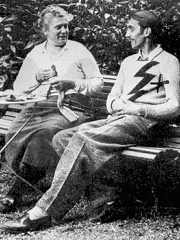
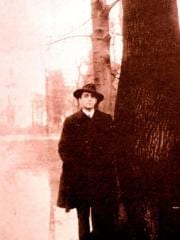
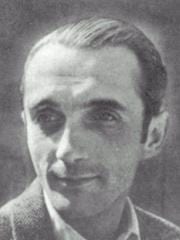

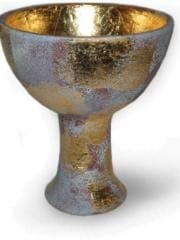
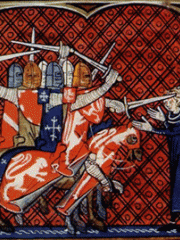
Commenti recenti
13 anni 44 settimane fa
13 anni 44 settimane fa
13 anni 44 settimane fa
13 anni 45 settimane fa
13 anni 48 settimane fa
14 anni 1 settimana fa